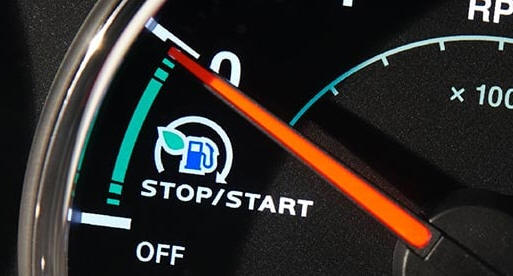Subjects:
- General
- Operation
General:
With the start-stop system, the engine is switched off while stationary and restarted the moment the driver wants to start driving again. This can be while waiting for a traffic light, or waiting for an open bridge. A vehicle with a start and stop system falls under the category of “micro-hybrid”.
The legislation prescribes that new passenger cars may not emit more than 130 grams of CO2 per kilometer on average during the legally established driving cycle. This driving cycle consists of driving in different conditions and standing still. While standing still, fuel is consumed and CO2 is emitted, which is disadvantageous for the test. Passenger cars that came on the market from 2012 are therefore equipped with the start-stop system.
Vehicles equipped with a start-stop system often have a button on the dashboard with which the system can be temporarily switched off. In that case, the engine will no longer be switched off. The system is automatically reactivated on the next ride. Permanently switching off the start-stop system is sometimes possible, but not permitted: the vehicle then no longer complies with the type approval.

Operation:
The start-stop system operates when the vehicle is stationary. This is registered by the wheel speed sensors (ABS sensors). Vehicles with an automatic gearbox may cause the engine to stall if the brake pedal is left depressed. When the brake pedal is released, the engine starts and you can drive off immediately. Vehicles with a manual transmission often require the transmission to be in neutral and the clutch disengaged. As soon as the clutch pedal is depressed, the engine starts.
The start and stop system will only operate if the following conditions are met:
- Outside air temperature above 3 degrees Celsius (may vary by brand).
- Engine is at operating temperature.
- Battery sufficiently charged and at temperature. For this purpose the signal from the intelligent battery sensor used.
- The driver's seat belt is in the belt buckle.
- Driver's door closed.
- Hood closed.
- Vehicle is not on a slope.
- Windshield defroster is not active.
- Diesel particulate filter is not regenerated.
- Front wheels should not be turned too far.
- Tow bar is not connected to a trailer.
If these conditions are not met, a message often appears in the dashboard with the message: “Start-stop system disabled”, or a symbol as in the image. This message also appears when switching off manually with a button on the dashboard.

Related page:
